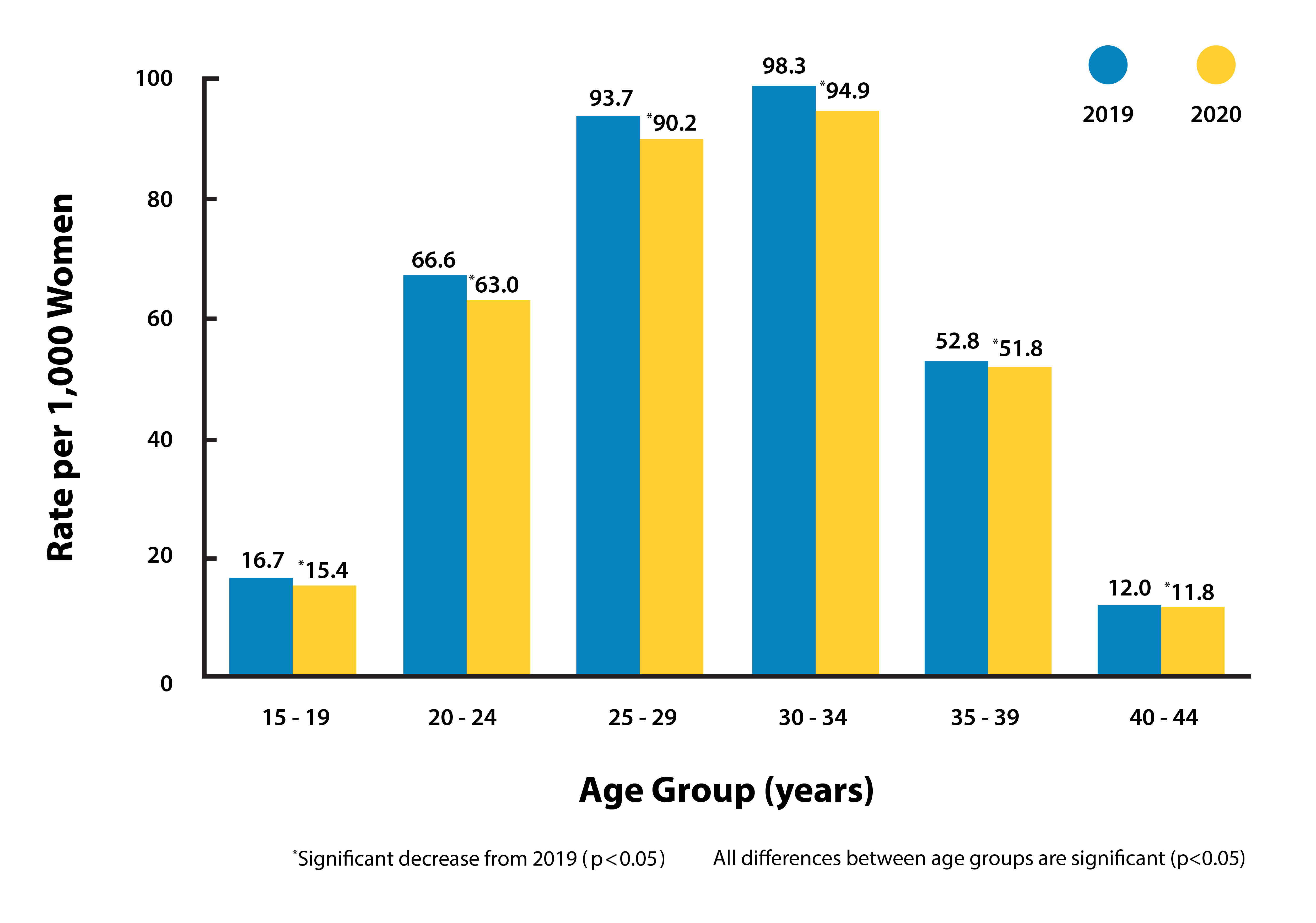3. Health Data Sources
Vital Records
Vital records are collected by the National Vital Statistics System and are maintained by state and local governments. Vital records include births, deaths, marriages, divorces, and fetal deaths. They also record information about the cause of death, or details of the birth.
Vital records are useful because they offer very detailed information and include information about rare disorders that end in death. Unfortunately, because there are so many state and local governments collecting this information, records can be inconsistent. Also, vital records only provide information on diseases and illnesses that end in death.
This graph from the National Center for Health Statistics shows the birth rates per 1,000 women for each age group in the United States for 2019 and 2020. For each age group, the 2020 birth rate had a statistically significant (p < 0.05) decline from the 2019 birthrate for the group.1
Figure 2. Birth rates, by selected age group: United States, 2019 and 2020
1. Martin JA, Hamilton BE, Osterman MJK. "Births in the United States, 2020." NCHS Data Brief, no 418. Hyattsville, MD: National Center for Health Statistics. 2021. DOI: https://dx.doi.org/10.15620/cdc:109213. Available from: https://www.cdc.gov/nchs/products/databriefs/db418.htm.
